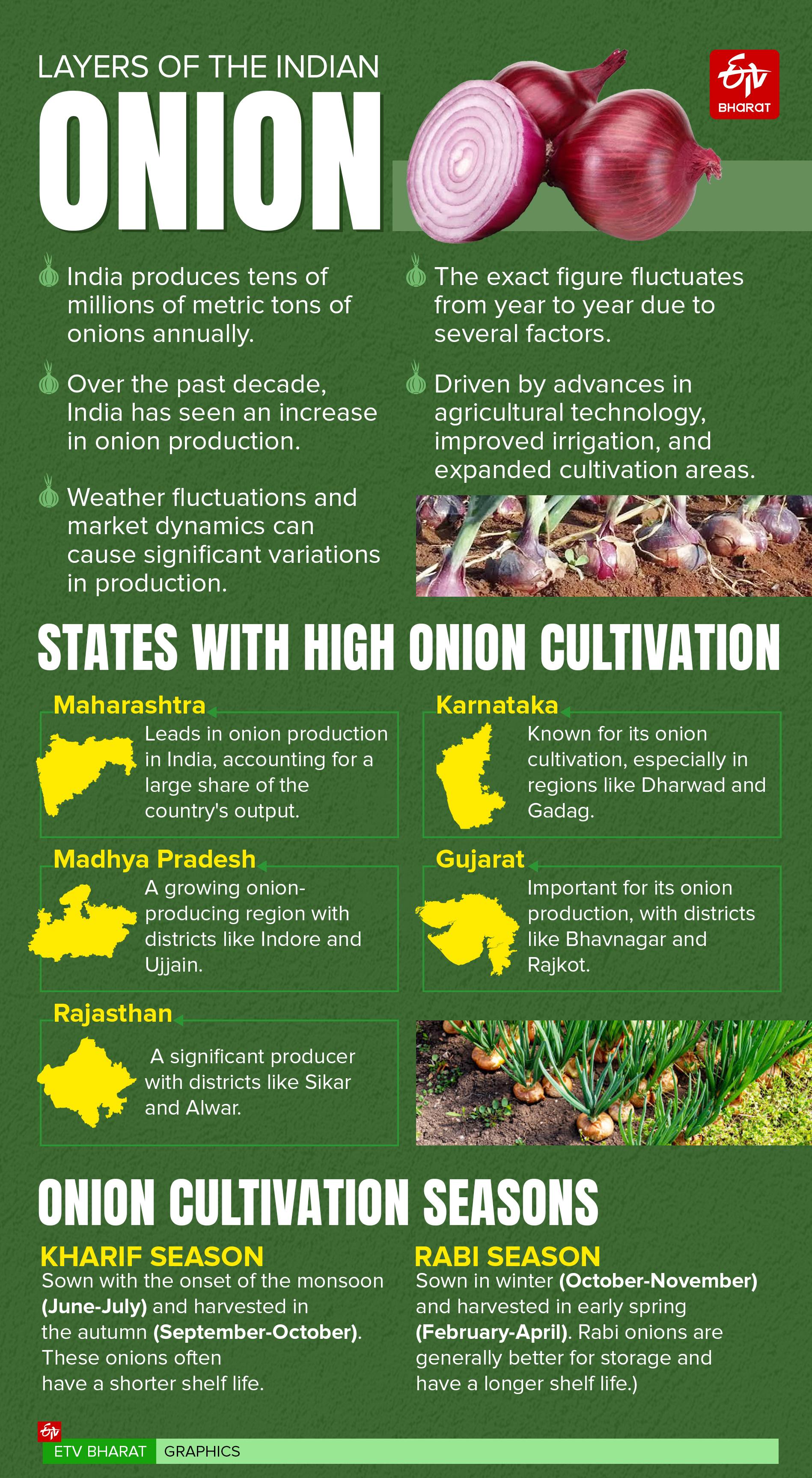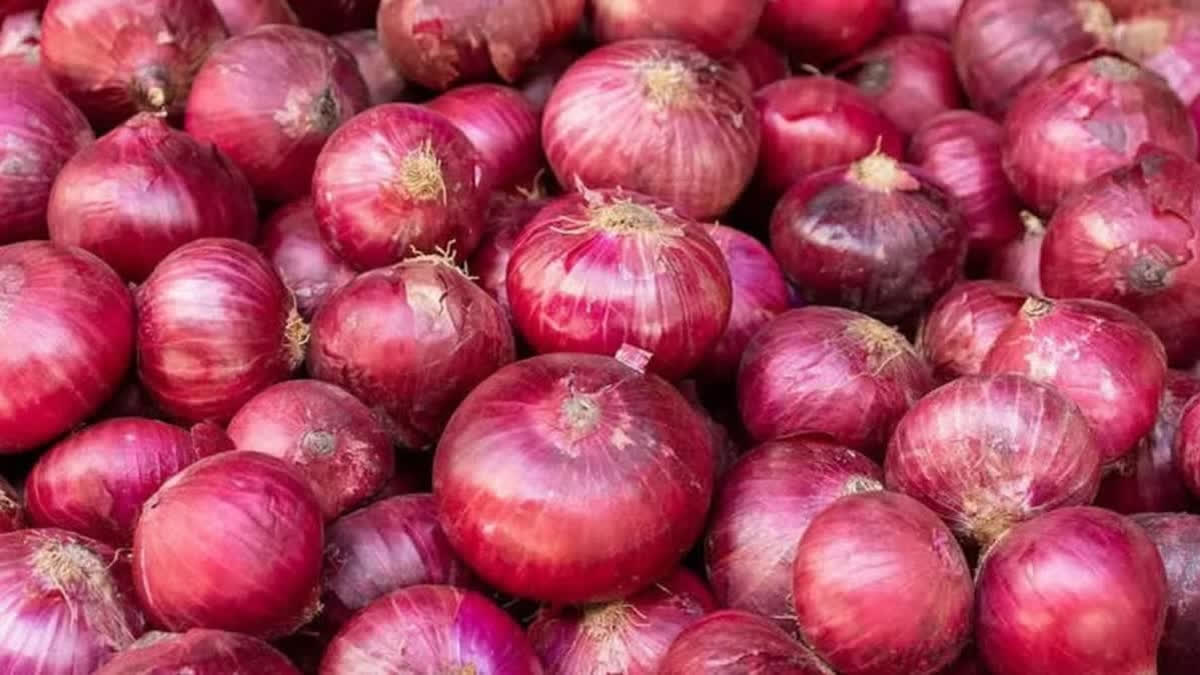New Delhi: India’s lifting of the ban on onion exports to six countries late last month has led to contradictory outcomes in two of the country’s immediate neighbours. While the price of this kitchen essential in Bangladesh has dropped, reports suggest that the same will double in Nepal. On April 27, the Indian government allowed the export of 99,150 MT of onions to Bangladesh, the United Arab Emirates (UAE), Bhutan, Bahrain, Mauritius and Sri Lanka. Following this, on May 4, it was announced that India has lifted the restrictions on onion exports from Friday because of robust Kharif crop production in 2024 and favourable monsoon forecasts, coupled with stable market conditions both at the wholesale market and retail levels.
“All restrictions on onion export have been removed with effect from today,” Nidhi Khare, Secretary, Department of Consumer Affairs, said at a press conference in Delhi. “This is taking into account the Rabi 2024 production and approved Kharif prospect because of above normal monsoon.” She further added that “the current market situation, which was stable both at Mandi (wholesale market) and retail and also the international availability and prices situation”. According to the official estimate, the Rabi 2024 onion production is about 191 lakh tonnes, which is reasonably comfortable considering monthly domestic consumption of about 17 lakh tonnes.

Why is India an important source of onions?
India is the second-largest producer of onions in the world after China, accounting for around 20 per cent of global production. The country’s favourable climate, vast agricultural land, and well-established irrigation systems make it an ideal location for onion cultivation.
India has diverse agro-climatic conditions that are conducive to growing different varieties of onions throughout the year. The major onion-producing states include Maharashtra, Karnataka, Gujarat, Bihar, Madhya Pradesh and Rajasthan, which have suitable soil and temperature conditions for onion cultivation.
With its massive production, India has a consistent supply of onions available for domestic consumption and export. The abundant supply and relatively low production costs make Indian onions affordable for many countries, especially in South Asia and West Asia.
India is one of the leading exporters of onions in the world. It exports onions to countries in Southeast Asia, West Asia, Europe and North America. India has also entered into trade agreements with various countries, facilitating the smooth flow of onion exports.
The global demand for onions has been steadily increasing due to population growth, changing dietary patterns and the popularity of cuisines that heavily rely on onions. India’s ability to meet this growing demand has made it a reliable source for many countries.
India has developed an extensive network of cold storage facilities and efficient transportation systems, which allow for the preservation and timely distribution of onions to domestic and international markets.
Why did India temporarily ban the export of onions?
Onion export prohibition has been imposed to ensure adequate domestic availability against the backdrop of estimated lower Kharif and Rabi crops in 2023-24 as compared to the previous year and increased demand in the international market. The export of onions had been prohibited with effect from December 8, 2023, to increase domestic supply against an estimated 20 per cent decline in the Kharif and late Kharif production. The restriction on export helped the government maintain stable prices till the arrival of the Rabi 2024 crop.
Onions can be grown as both Kharif and Rabi crops in India depending on the region and climate.
Kharif onion crop is sown during the monsoon season (around June-July) and harvested in the autumn (around October-November). These onions generally have a shorter shelf life and are typically consumed or processed soon after harvest.
Rabi onion crop is sown during the winter (around October-November) and harvested in the spring (around March-April). Rabi onions are usually preferred for storage because they have a longer shelf life compared to Kharif onions.
India’s onion production is a mix of both Kharif and Rabi seasons, with some regions focusing more on one type based on climate, soil conditions, and market demand. Thus, while onions can indeed be a Kharif crop, they are not exclusively grown during this season and can be cultivated year-round with varying outcomes depending on when they are planted.
Which is India’s biggest onion-producing region?
Maharashtra is India’s leading onion-producing state, known for playing a significant role in the country’s total onion output. It accounts for a substantial portion of national production, with districts such as Nashik, Pune, Ahmednagar and Satara serving as major hubs for onion farming.
Maharashtra's leadership in onion production is driven by its favourable climate, extensive farmlands devoted to onion cultivation and established farming methods. The state grows onions during both the Kharif and Rabi seasons, ensuring a steady supply throughout the year. This continuous production enables Maharashtra to serve as a key supplier of onions to other regions in India as well as for export.
How has Bangladesh gained from India lifting the ban on onion exports?
According to a report in the Dhaka Tribune, prices of onions dropped significantly ever since India lifted the ban on the kitchen staple. Hili Bazar is a market located in the Dinajpur district of Bangladesh, near the India-Bangladesh border. It serves as a significant trade point between the two countries, particularly through the Hili Land Port, which facilitates cross-border trade and the movement of goods.
“The price (of onions) dropped by Taka 10 per kg on Sunday following news of imports (from India) resuming on Saturday,” Ashraful Islam, a resident of Hili Bazar, was quoted as saying by the Dhaka Tribune. “Traders had hiked prices due to limited supply. Suddenly, there’s an abundance of onions in all shops on Sunday. Yet, Indian onions have not yet arrived, suggesting market manipulation by traders. We urge the government to intervene and regulate the onion market.”
According to Abul Hasmat, an onion vendor in Hili Bazar, stockpile holders have now been forced to release their reserves following India’s decision. “Onion prices have remained high since Eid (celebrated last month), soaring from Taka 50 to Taka 70-75,” Sabuj Hossain, a shopper at Hili Bazar, was quoted as saying by the Dhaka Tribune. “The inflated prices have made it challenging to manage household expenses, compelling me to reduce my purchase. Today (Sunday), I could buy at Taka 60 per kg.”
But, why is onion price expected to be going up in Nepal?
Though India has lifted the onion export ban, it has imposed a minimum export price of $550 per tonne. Though onions are available at (Nepali rupees) (Nepali rupees) NR60 per kg in Nepal as of now, the new Indian condition may raise the price of the red bulb to over NR100 per kg.
“Onion supply was normal despite the Indian ban in the past months,” the Kathmandu Post quoted Binay Shrestha, information officer at the Kalimati Fruits and Vegetable Market Development Board, Nepal’s largest vegetable trading centre, as saying. “But now, the minimum export price may send the price higher,” Shrestha said that though India imposed a ban on onion exports, its smuggling thrived in Nepal mainly due to the price difference between the two South Asian nations. India’s lifting of the ban on onion exports has brought tears of joy among some and sorrow among others.



